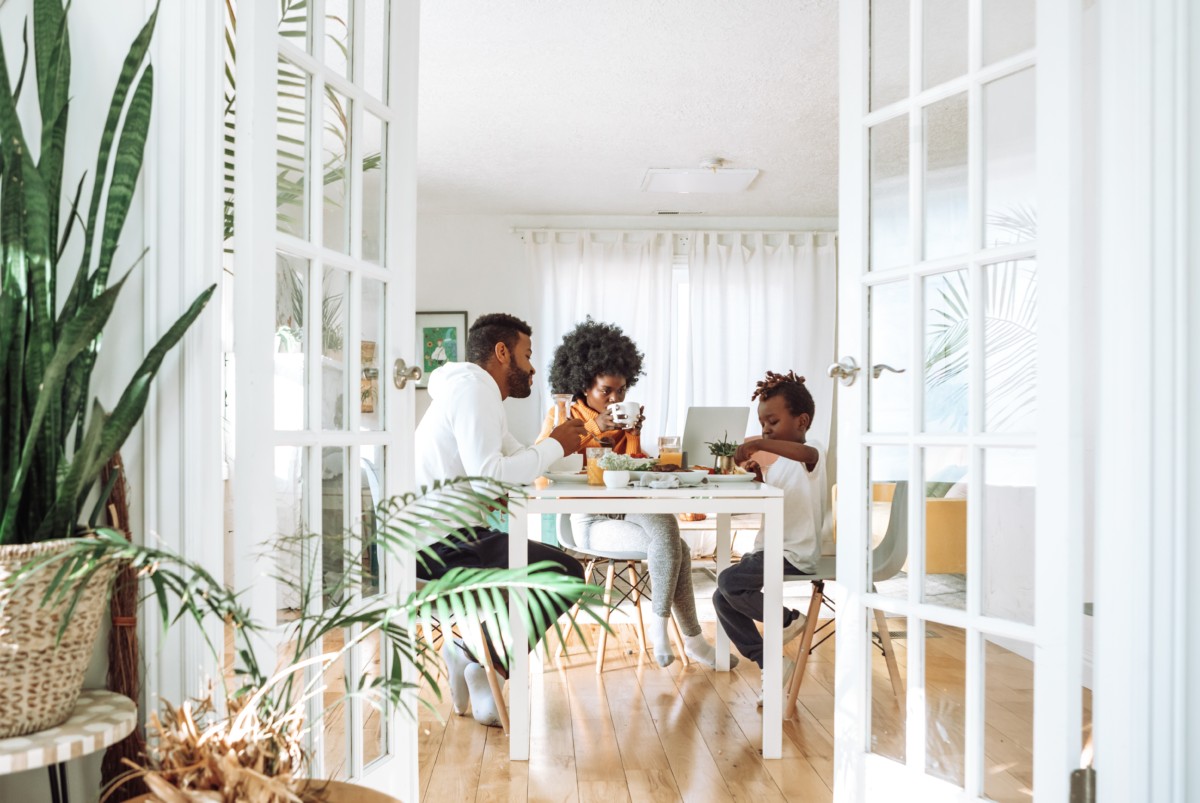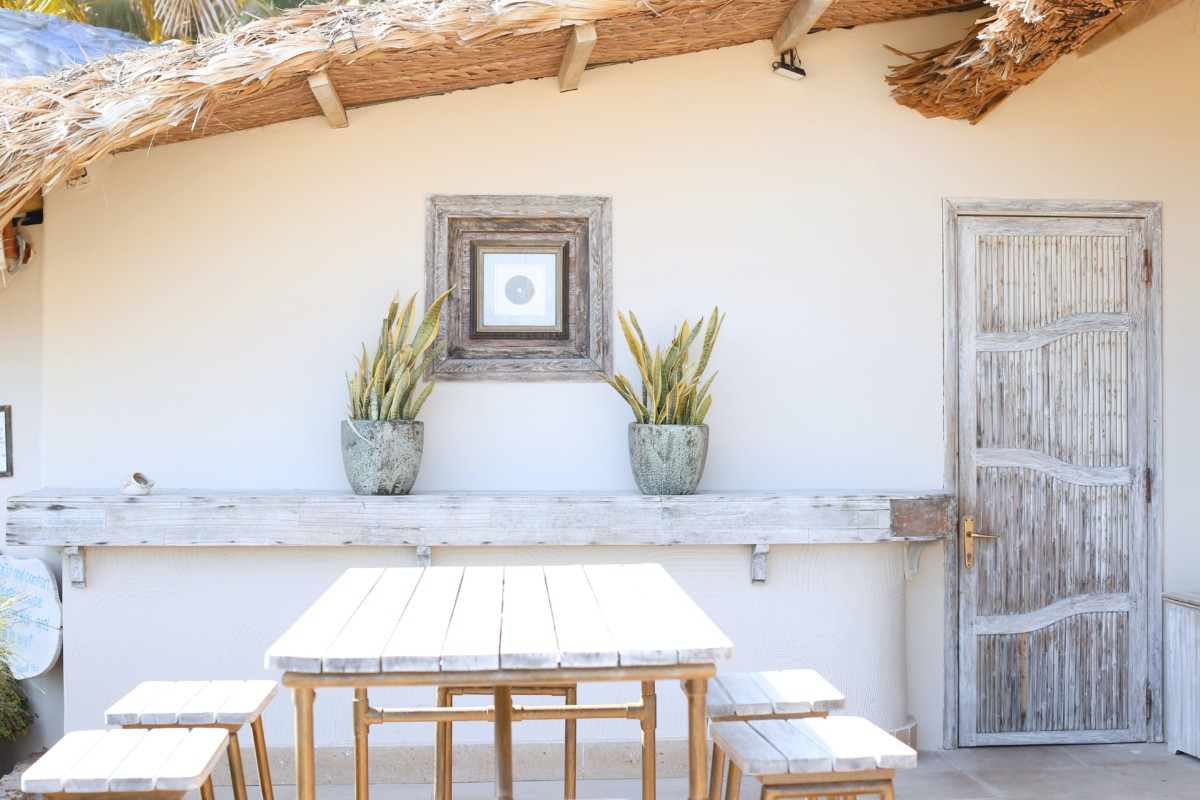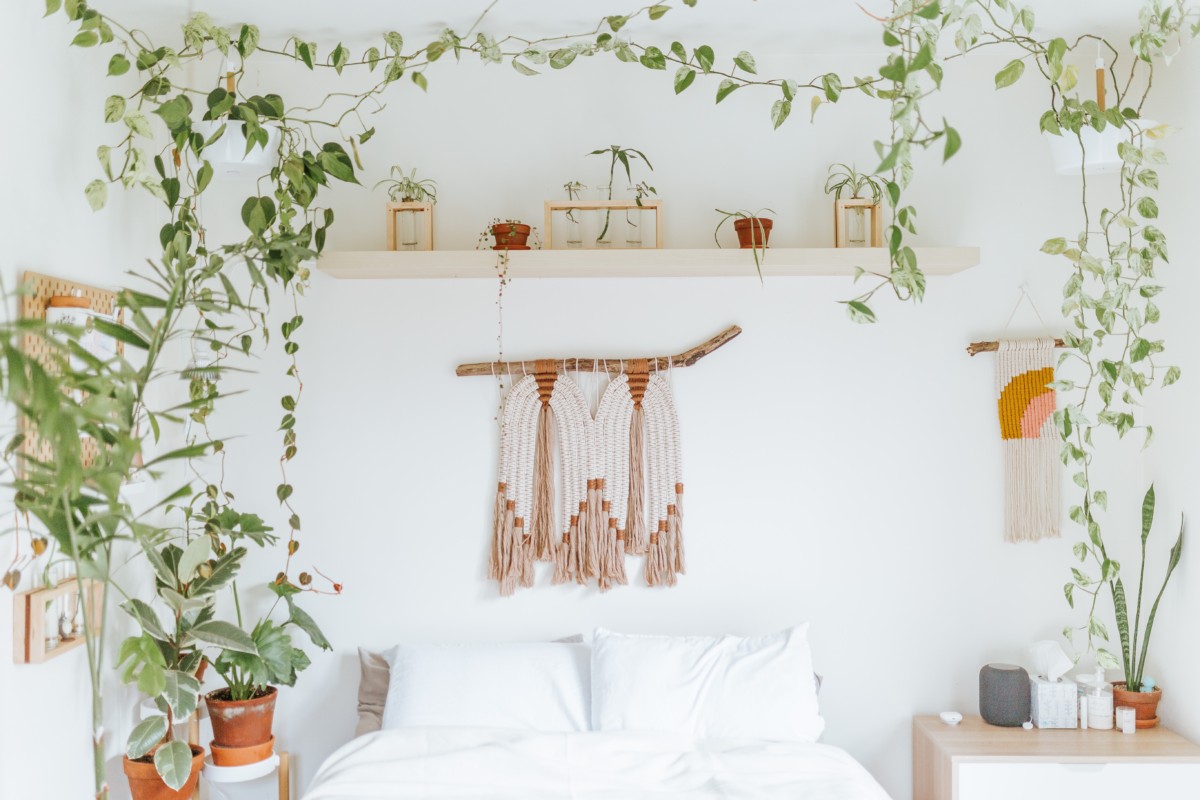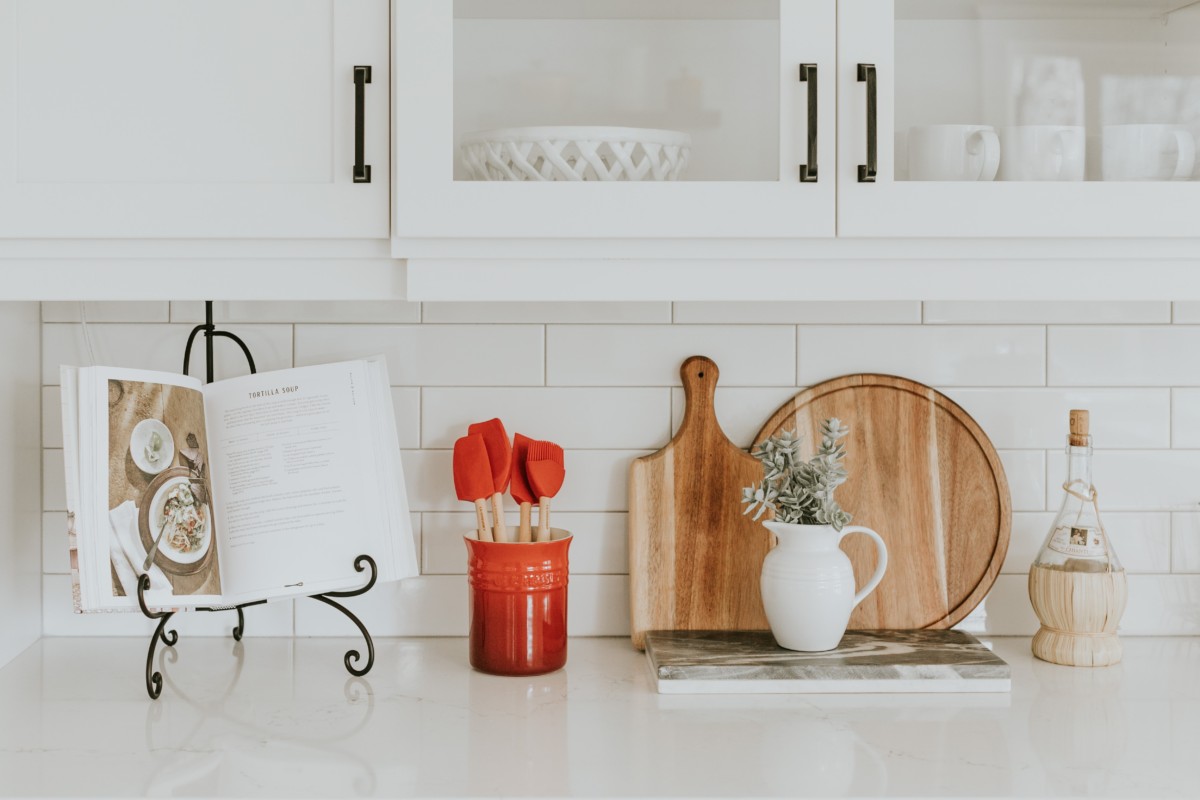Creating a home with intention can be a transformative process that allows you to live in a space that is not only beautiful but also meaningful and functional.
Our homes are more than just physical spaces; they are reflections of our personalities, values, and priorities. Creating a home with intention means taking the time to curate a space that truly resonates with who you are and what you want to accomplish in life. It involves intentional decoration, feng shui, creating a cozy “hygge” atmosphere, and setting a stress-relieving environment. While the idea of intentional home creation may seem overwhelming at first, it is a process that can be transformative and ultimately enhance your overall wellbeing and quality of life. In this blog post, we will explore different ways to create a home with intention, including tips on minimalism and how to approach it in your own way. So whether you are starting from scratch or rethinking your current living space, read on for inspiration and guidance on how to create a home that is both beautiful and meaningful.
The Benefits of Creating a home with Intention and heart
Creating a home with intention has numerous benefits for mental health, physical health, social interactions, and the environment. Here are some of the key reasons why intentional home creation is important:
Enhanced Sense of Identity and Personal Expression
Creating a home with intention can help you develop a stronger sense of identity and personal expression. By making intentional choices for your home, you can create a space that reflects your personality and style. This can help you feel more connected to your living environment and promote a sense of authenticity and self-expression through your intuition. Additionally, by incorporating meaningful items, you can create a space that feels uniquely yours and helps you feel more grounded and centered in your daily life.
Improved Mental Health
Our living environment can have a significant impact on our mental health. Creating a home with intention can help reduce stress, promote relaxation, and increase feelings of wellbeing. By incorporating elements like natural light, plants, personal items, and removing clutter, you can create a space that promotes mental wellness and helps you feel more centered and calm.
Increased Physical Well-being
Our home environment also plays a role in our physical health. By incorporating sustainable materials and eco-friendly choices, you can create a space that supports a healthy lifestyle. For example, choosing non-toxic cleaning products, air-purifying plants, and natural materials can help reduce exposure to harmful chemicals and promote better respiratory health.
Social Interactions
Our home is often a place where we connect with friends and family. Creating a home with intention can help promote social interactions and strengthen relationships. By creating comfortable and inviting spaces, you can encourage more frequent gatherings and foster a sense of community and love.

Increased Productivity and Creativity
Intentional home creation can also have a positive impact on productivity and creativity. By designing a space that is comfortable, organized, and free from distractions, you can improve focus and concentration. Additionally, incorporating elements like natural light, inspiring artwork, and comfortable seating can help promote creativity and encourage a positive mindset. A well-designed home environment can help you feel more motivated and energized, leading to increased productivity and creativity in your daily life.
Financial Benefits
By making intentional choices when it comes to decorating and furnishing your home, you can reduce unnecessary spending and invest in quality, long-lasting items. For example, choosing high-quality furniture that is built to last can save you money in the long run, as you won’t need to replace it as frequently. Additionally, incorporating energy-efficient appliances and lighting can help reduce utility bills, leading to cost savings over time. By creating a home with intention, you can save money while also living in a comfortable and beautiful living environment. As a bonus, choosing intentional and high quality products are sustainable choices that will last longer and contribute to less waste on Mother Earth.
The first step
Here are three first steps you can take in creating a home with intention and heart:
- Define your values and priorities: The first step in creating a home with intention is to define what matters most to you. This involves reflecting on your values and priorities, and considering how you want your home to reflect them. For example, if sustainability is important to you, you may want to focus on eco-friendly choices when it comes to decorating and furnishing your home.
- Create a vision board or inspiration board: Once you have defined your values and priorities, it’s time to create a vision board or inspiration board for your home. This can include pictures, colors, and textures that inspire you and reflect the aesthetic you want to achieve. Creating a visual representation of your ideal living space can help you stay focused on your goals and make intentional choices when it comes to decorating and furnishing your home.
- Declutter, simplify and clean: Before you can begin to create a space with intention, it’s important to declutter and simplify your living environment. This involves taking stock of your belongings and deciding what to keep, donate, or discard. You can read more on that below. Simplifying your living space can help you feel more organized, reduce stress, and create a sense of calm. It’s important to clean up your home, give it a good old spring clean, so that you wash away dirt and all unwanted energy. If you really want to start fresh and get rid of old energy, consider reading this article on smudging. This will also help you start with a fresh new blank canvas.
Minimalism In your Own Way
While minimalist principles can be useful in creating a stress-free and organized space, it is important to approach minimalism in your own way. Minimalism is not about getting rid of everything you own or living in a stark and sterile environment. It is about simplifying your life and creating space for the things that truly matter to you.
Minimalism is a design philosophy that emphasizes simplicity, functionality, and the use of minimal elements. Minimalism can be a useful tool in creating a home with intention because it encourages you to prioritize the things that are most important to you and reduce the clutter and excess that can be distracting and overwhelming.
Incorporating minimalism into your home can look different for each person, as minimalism is a personal choice and can be applied in various ways. Some people choose to adopt a minimalist aesthetic throughout their entire home, while others incorporate minimalist principles in specific areas or rooms. Regardless, minimalism is about embracing what’s bringing you joy, whether that’s owning 0 books or 100 of them.
One way to approach minimalism in your own way is by focusing on quality over quantity. Instead of owning many cheap items, choose to invest in high-quality pieces that will last a long time and bring you joy. This can apply to everything from furniture to clothing to kitchen appliances.
Another way to approach minimalism in your own way is by focusing on the things that bring you joy and meaning. This may mean holding onto sentimental items that may not fit within a traditional minimalist approach, but that have deep personal meaning and significance to you.
If you want more tips on how to get started, here’s a more comprehensive guide in the 30-days Minimalism Challenge for Beginners.

Intentional Decoration
Intentional decoration means taking the time to select items that reflect your personality and values, rather than simply buying things because they are trendy or convenient. It is about creating a space that is unique to you and that you truly love.
One way to create intentional decoration is by incorporating sentimental items into your home. These can be heirlooms passed down through generations, items you’ve collected from your travels, or artwork created by family members or friends. By displaying these items in your home, you can create a space that is both beautiful and deeply meaningful.
Another way to intentional decorate is by selecting items that align with your values. For example, if you prioritize sustainability, you may choose to decorate with natural materials such as wood, bamboo, or organic cotton. If you value supporting local artisans, you may choose to purchase handmade items from local markets.
Remember to take your time to find the pieces that you love. There’s no need to go on a splurge just to “fill in the gaps” of your home. Intentional decorations takes time. You know it’s intentional and with heart when you’ve had it for a long time and still love looking at it. Often, intentional decorations won’t need to be replaced.
Eco-consciousness
Sustainability is an important consideration in intentional home creation. By incorporating sustainable practices into your home, you can reduce your carbon footprint and create a space that is both beautiful and environmentally friendly.
One way to incorporate sustainability into your home is by selecting eco-friendly materials. For example, you can choose to use low-VOC (volatile organic compounds) paints, which are safer for your health and the environment. You can also choose to use natural materials such as bamboo, cork, or reclaimed wood for your home, which have a lower impact on the environment than synthetic materials.
Another way to incorporate sustainability into your home is by reducing waste. This can be achieved by choosing to buy items that are durable and long-lasting, rather than disposable. For example, you can choose to buy quality furniture that is built to last, rather than buying cheap furniture that will need to be replaced every few years. There’s also heaps of treasures found thrifting! Always remember to reduce your personal waste by recycling, composting or giving them new owners, if you do end up replacing items in your home.
Hygge
Creating a cozy vibe (hygge) in your home is essential to creating a space that is warm, welcoming, and inviting. A cozy home is a place where you can relax and unwind after a long day, and where you feel comfortable and at ease.
One way to create a cozy vibe is by incorporating soft textures into your home. This can be achieved by adding plush pillows, cozy blankets, and soft rugs to your space. By incorporating these soft textures, you can create a space that is warm and inviting, and that encourages relaxation and comfort.
Another way to create a cozy vibe is by incorporating warm lighting into your space. This can be achieved by using soft, warm-toned bulbs, and by using lamps and candles to create a warm, ambient glow. Avoid using too many ceiling lights as they can come across a little harsh. By using warm lighting, floor lamps and sconces, you can create a space that feels cozy and welcoming, and that encourages relaxation and comfort.

Embody the Stress-free Environment
Creating a stress-relieving environment in your home is essential to promoting overall wellbeing and relaxation. By creating a space that is calming and peaceful, you can reduce stress and anxiety, and promote a sense of calm and tranquility.
One way to create a stress-relieving environment is by incorporating natural elements into your home. This can be achieved by adding plants to your space, which not only add a beautiful touch of greenery but also purify the air and promote relaxation. You can also incorporate natural materials such as wood, healing crystals, or water, which have a calming effect and promote a sense of connection to the natural world.
Another way to create a stress-relieving environment is by minimizing clutter and creating a sense of order in your home. A cluttered space can be overwhelming and stressful, while a clean and organized space promotes a sense of calm and clarity. You can achieve this by adopting a weekly routine where you take time to tidy, simplify and clean your home. It’s kind of like a weekly home reset. Your well-being will thank you.
lasts Word From Feng Shui
Feng shui is a practice that originated in China and involves arranging your living environment in a way that promotes positive energy flow and balance. This is why we want to incorporate the the idea of feng shui as we create our home with intention and heart. While the principles of feng shui can be complex, there are some basic concepts that can be incorporated into intentional home creation.
One key principle of feng shui is to create a harmonious and balanced flow of energy, or “chi,” throughout your living environment. We achieve this by using colors, lighting, and furniture placement to create a sense of balance and flow in each room. For example, placing a mirror in a strategic location can help reflect light and create a sense of spaciousness, while incorporating plants can help promote a sense of calm and natural beauty.
Another principle of feng shui is to create a space that promotes rest and relaxation. This can be achieved by choosing calming colors and textures, incorporating soft lighting, and choosing furniture and decor that is comfortable and supportive. For example, using soft, natural fabrics like cotton and linen, and incorporating soft lighting can create a sense of tranquility and relaxation in your living environment.
Finally, feng shui emphasizes the importance of creating a space that reflects your personality and values. This means choosing furniture and decor that speaks to your individual tastes and interests, and creating a space that feels uniquely yours, as we’ve already went through. By incorporating feng shui principles into intentional home creation, you can create a living environment that promotes positive energy flow, balance, and harmony, while also reflecting your individuality and personal style.

Conclusion
Creating a home with intention involves being mindful of the way we design, decorate, and use our living spaces. By prioritizing sustainability, intentional decoration, creating a cozy vibe, and setting a stress-relieving environment, we can create a space that promotes our physical and mental health, social interactions, and environmental well-being. Incorporating minimalist and feng shui principles can also help create a harmonious and balanced living environment that reflects our individuality and values.
Designing a home with intention takes time, effort, and thoughtful consideration, but the benefits are numerous. By creating a space that aligns with our values and priorities, we can feel more grounded, centered, and at ease in our daily lives. We can also reduce our environmental impact, promote positive social interactions, and improve our overall well-being.
As we continue to spend more time at home, it’s important to prioritize intentional home creation and make our living environments a space that supports and nourishes us. By using the tips and principles discussed in this blog post, we can create a home that promotes balance, harmony, and well-being, and that truly feels like a reflection of who we are.
